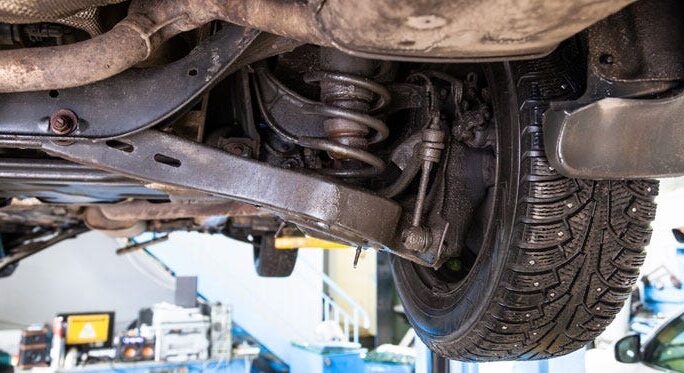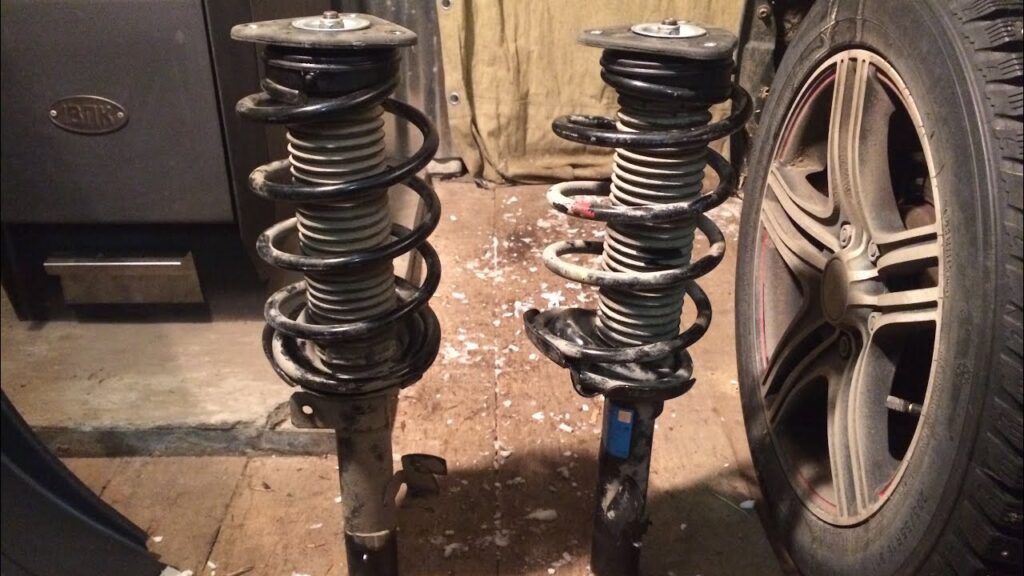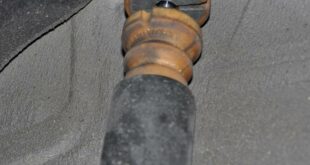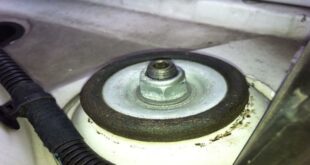The shock absorbers are ultra-important components of a car's chassis, which are in addition to the Brakes and steering contribute significantly to driving safety. Although defective shock absorbers often creep in unnoticed as a result of habituation, there are clear signs that indicate impairment.
Shock absorber broken? Symptoms!
- Repeated rocking: A simple method to check the condition of the shock absorbers is to manually oscillate the vehicle near the wheels. If the car rocks several times, this could indicate defective dampers.
- Vibration after bumps: If the vehicle drives over bumps and swings, this is an indication of defective shock absorbers.
- Rumbling noises: Defective shock absorbers can cause rumbling noises, especially on poor roads and at low speeds.
- Uneven tire wear: Increased tire wear and uneven wear patterns are often an indication of problems with the shock absorbers.
- Shaky steering: Unsteady steering or an interrupted braking mark after an emergency stop also indicate defective shock absorbers.
- Spongy cornering behavior and increased sensitivity to crosswinds are further symptoms.
Functional testing and replacement
A real functional test of shock absorbers is difficult without special equipment. As part of a general inspection, the main focus is on: large amounts of oil escaping respected. A comprehensive review is best done on one special shock absorber test bench, where the decay curve of the vibrations is analyzed. Importance of functioning shock absorbers: Functioning shock absorbers are crucial for the Road holding. They prevent the car from swinging endlessly after bumps and thus enable targeted steering. If the shock absorbers are defective, the risk of one increases Rollover during lane change test (moose test) significantly. The Lifespan of shock absorbers can be between 60.000 km and 250.000 km vary.
Conclusion
Regular checks of the shock absorbers are essential for safety and driving stability. If there are any signs of defects, they should be checked immediately in a specialist workshop and, if necessary be replaced. Replacing defective shock absorbers in a timely manner contributes significantly to driving safety and driving comfort.
What are they even there for?
- Shock absorbers, installed on all four wheels of a car, are essential for safety and driving comfort. They work with the springs to absorb shock and prevent the vehicle from swaying. This ensures permanent contact with the ground and safe driving.
How the shock absorber works
- A shock absorber converts the kinetic energy of the spring into heat. This is done by braking the oil in the damper using valve passages, which effectively reduces spring vibrations.
What types of shock absorbers are there?
- Oil pressure damper: Tend to oil foaming, which can reduce damping force.
- Gas pressure damper: Prevent oil foaming and enable optimal chassis tuning, even on long journeys.
Possible causes, defective shock absorber
- Defects in shock absorbers can result from regular stress, dirt, moisture and sporty driving style. Leaks also lead to faster wear.
Signs of a defective shock absorber?
- Rumbling noises on bad roads
- Reverberation of the vehicle on bumps
- Spongy driving behavior in curves
- Shaky steering and increased sensitivity to crosswinds
- Traces of oil on the vibration damper
- Tires worn irregularly
Shock absorber defective? Test & workshop
- “Rock test”: Press down the front and rear of the car. If it bounces several times, this indicates defects.
- Visual inspection: Traces of oil on the damper indicate that it needs to be replaced.
- Workshop control: Have the shock absorbers checked in the workshop after mileage of 80.000 kilometers or more.
- Shock absorber defective – consequences: A defective shock absorber significantly impairs driving safety and, in the worst case, can lead to serious accidents.
- Replacing a defective shock absorber: An exchange should be carried out in a specialist workshop as the work requires special tools and is associated with dangers.
- Don't underestimate changing shock absorbers: Replacing shock absorbers should not be done independently without professional help.
- Costs for replacing a defective shock absorber: The costs vary depending on the vehicle and workshop. Expect material costs of around EUR 200 to EUR 400 per axle, plus labor and time costs.
- How quickly does a shock absorber wear out?The lifespan of a shock absorber depends on the quality and driving habits. A check in the workshop is recommended after 60.000 to 80.000 kilometers of mileage.
thematically relevant posts
In our category Tips, products, information & Co We have reviews of car or accessories manufacturers, new ones Tuning Wiki Terms or one or two leaks published.
 tuningblog.eu Your magazine about tuning the car
tuningblog.eu Your magazine about tuning the car



